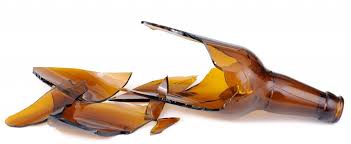Riding the wave (Random thoughts)
It is the end of the season, and usually my brain starts to do reflections on what was done both in team training and in my own training (if we can call it that way). The concept that emerged in my head was the concept of riding the wave. This concept has a lot in common with the sport form (shape) or the phase of quasi-stable results/performance. We have caught certain wave and we have ridden it for certain amount of time (the question is for how long). If we keep pushing, we will certainly hit the rocks (injury, burnout). We need to stop, swim away and catch a better one and appreciate what we have learned by riding the previous. Hence the importance of cycles and periodization. This is well know key concept – cyclical nature of training process.

We need time to move away from the situation. To see the full forest we need to get out of it.
This cyclical nature refers both to physical and psychological. We just can’t keep riding the same wave forever. For example, Bret Contreras in the new blog entry refers to the same concept, but unfortunately for him, injury made him do it. It made me do it too, couple of times. We need to take a break from everything, go back to the basics, improve technique, start easy, work on mobility and stability and stuff. This is why I find concept of Anatomic Adaptation (Tudor Bompa) more and more important. And usually, we will surpass our old PRs, fix injuries and maybe the most important, fix our mindset. The new training process/system will be established.
In team sports, we are riding the wave we caught/established in the preparatory period. We just can’t change a lot of things during the in-season (sometimes you have to, to save the situation). We need to catch better wave next preparatory period and ride it during the in-season. This not only relates to the methods/exercises, but also team culture, atmosphere, everything. I mean, we can change things during the in-season, sometimes we have to, but it usually have penalties to be paid.
So, this concept goes well with the following periods:
Transition period: Get off the wave, swim back to the open sea and prepare to catch a wave
Preparatory period: Catch a wave, let it develop
Competition period: Ride the wave
Make sure to catch a good wave during the preparatory period (relationship with players, expectations, team culture, responsibilities, rules, training system, nutrition, recovery modalities, rapports…) because you are going to ride it for a long time during the competition period.
This cyclical nature of training process reminds me of the mythical Phoenix, who burns down to emerge as better over and over again.
In my own training I identified certain trend where I start easy, work on technique, no rush, progress, hit PRs and if I keep pushing it I end up injured or burned down. Then I de-train and start all over again. This can be prevented by purposefully stopping, reflecting and catching a better wave. You know the feeling. You start to be achy in the joints, need to push yourself for progressive overload and you feel emotionally worn out to go and train. Usually, you forgot to enjoy the ride and you fixate on the goals (PRs, continual progression). You can keep pushing it, or you can relax, recycle and catch a new and better wave. This is why I am about to do Anatomic Adaptation phase, start easy and new PRs anytime soon. Maybe I am wrong, but I guess Matveyev was right when he wrote about cycling nature of training. You just can’t avoid it.











Responses